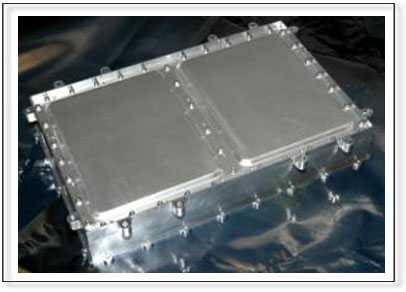Scientific Objectives
To detect water ice in the permanently shadowed regions on the Lunar poles up to a depth of a few meters
Although returned lunar samples show the Moon to be exceedingly dry, recent discoveries suggest that water-ice may exist in the polar regions. Because its axis of rotation is perpendicular to the ecliptic plane, the poles of the Moon contain areas that are permanently dark. This results in the creation of "cold traps", zones that, because they are never illuminated by the sun, may be as cold as 50-70 K. Cometary debris and meteorites containing water-bearing minerals constantly bombard the Moon. Most of this water is lost to space, but if a water molecule finds its way into a cold trap, it is there for ever - no physical process is known that can remove it. Over geological time, significant quantities of water could accumulate.
In 1994, the Clementine polar-orbiting spacecraft used its radio transmitter to "illuminate" these dark, cold trap areas; echoes were recorded by the radio antennas of the Earth-based Deep Space Network. Analysis of one series of data indicated that at least some of the dark regions near the South Pole had reflecti ons that mimicked the radio-scattering behavior of ice. Subsequently, the orbiting Lunar Prospector spacecraft found large quantities of hydrogen in the polar regions, corresponding closely with large areas of permanent shadow, consistent with the presence of water ice. The controversy over lunar polar ice continues to this day.
Mini-SAR is a onboard radar mapper that will allow viewing of all permanently shadowed areas on the Moon, regardless of whether sunlight is available or the angle is not satisfactory. Mini�SAR will observe these areas at incidence angles near 45 degrees, recording echoes in both orthogonal senses of received polarization, allowing ice to be optimally distinguished from dry lunar surface.
Payload Configuration Details
The mini-SAR system will transmit Right Circular Polarization (RCP) and receive both Left Circular Polarization (LCP) and RCP. In scatterometer mode, the system will measure the RCP and LCP response in the altimetry footprint along the nadir ground-track. In radiometer mode, the system will measure the surface RF emissivity, allowing a determination of the near normal incidence Fresnel reflectivity.
The synthetic aperture radar system works at a frequency 2.38 GHz with a resolution of 75m per pixel and weighs 6.5kg.
Miniature Synthetic Aperture Radar (MiniSAR) is from Applied Physics Laboratory, Johns Hopkins University and Naval Air Warfare Centre, USA through NASA.



